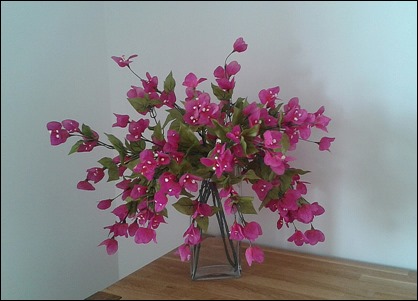I have long disliked the British climate.[Ed: No, really?] Though this may sound extreme, I think of it as one of the worst climates on the planet. Such a statement requires explanation.
It’s not that Britain has normally had dreadful extremes of weather but it does have a drab nothingness, sometimes for 12 months of the year. Winters are frequently cold, wet grey affairs, when the oppressively leaden skies weigh down on the psyche. The countryside becomes sodden and muddy, turning walks into slithers. Unlike a decent continental climate there is not usually any useful snow fall so skiing and other potentially exciting winter pastimes are not made available. British winters are simply irritating.
A proper summer rarely arrives in Britain. One did arrive in 1976, a year that everyone who was around then can remember, but that memorable exception simply proves the rule. Summer is often a warmer version of winter with lighter grey skies and no dry season, as such. There is not usually heavy rainfall in summer, but completely sunny, dry days are a rarity. Showers are the order of the day and not the preserve of April with its folklore April showers. British summers frequently disrupt outdoor events and planning a BBQ is nigh on impossible. My mother used to complain ‘cos I gave her no warning if I suddenly invited her round for a BBQ. I explained that the weather had given me no warning, either. At some point in a year, summer may put in a brief appearance but it is usually for less than a month and we never know which month might be graced by it. British summers are hardly worth the name.
In these regards, the British climate is surely one of the most frustrating on the planet. That’s what I mean about being a bad climate. [Note: Britain now does seem to be getting worse winter extremes with various sections of the countryside being much more regularly inundated, and American politicians still stubbornly refuse to accept the notion of climate change.]
It is, perhaps, not surprising, therefore, that I have had a long term love affair with the more southern regions of France and its Mediterranean climate. Here, with greater extremes of weather – inundation has long been a possibility – a proper summer does usually turn up and for considerably longer than a few measly weeks. Southern France is typified by the smell of hot pine forests and gloriously colourful Mediterranean plants, such as Bougainvillea, marking the difference in the climate. This glorious plant, frequently in flower, just screams “Mediterranean”.
With our relatively recent forays into Spain, even longer, reliable summers exist. I love ‘em all. Here, our friends can wander out into their garden and pluck a fresh lemon from their lemon tree, take it inside and cut a slice for their gin and tonic; a slice of fresh citrus fruit just seconds away from growing. That screams “Mediterranean”, too.
As a lover of summer side pursuits, I’ve long fancied living in a place where the climate not only allows me to get outside in comfort but that demonstrates the fact by allowing the iconic Bougainvillea to grow. recently, I’ve added been fancying the concept of having my own lemon tree for my gin and tonics, too.
Whilst we may now have such a suitable property, given our extended absences, a real lemon tree, though a small potted one would suffice, or a real Bougainvillea that would doubtless require attention to keep it alive through the lengthy summers, is not a practical proposition. However, knowing my desire for such an icon, Francine very cleverly found me the perfect answer for my birthday. I am now the proud owner of a maintenance-free Bougainvillea.
Happy chappy – modern fake flowers really are quite amazing.





















Recent Comments